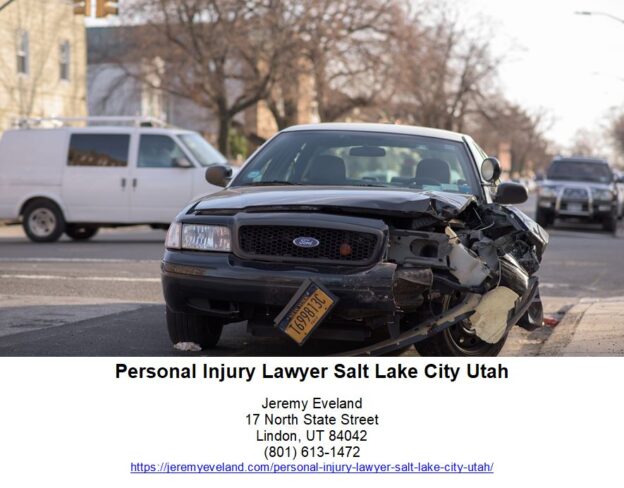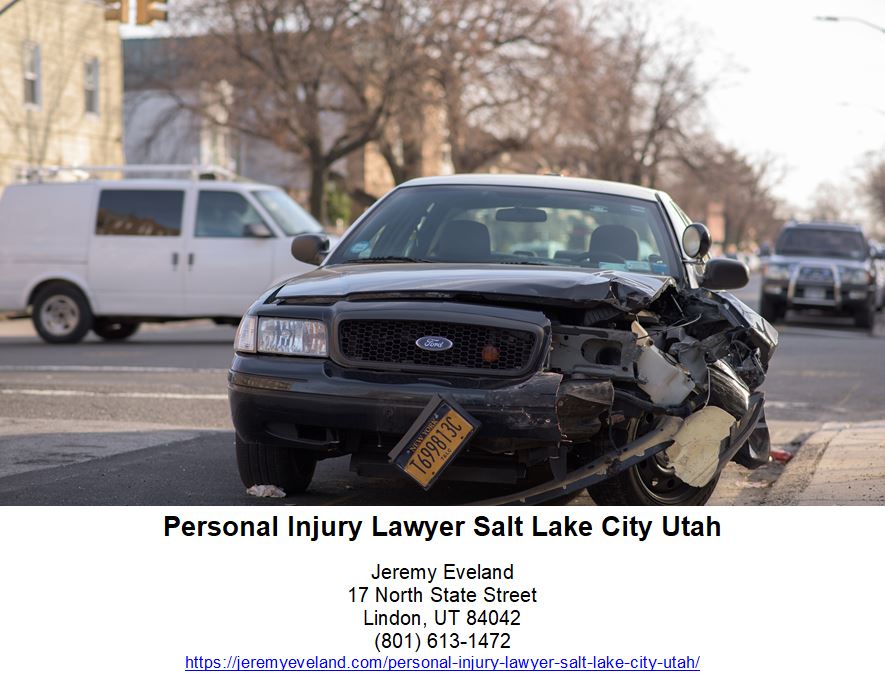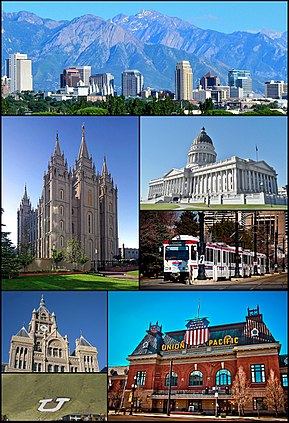Utah’s air and water quality laws are a complex and critical part of the state’s regulatory framework. As a business lawyer, it is imperative that you have a comprehensive understanding of these laws to ensure your clients’ compliance and protect their interests. This article aims to provide you with a detailed overview of Utah’s air and water quality laws, equipping you with the necessary knowledge to navigate this intricate legal landscape. By delving into the key regulations, enforcement mechanisms, and potential implications for businesses, you will gain invaluable insights that will empower you to assist and represent your clients effectively.
Overview of Utah’s Air and Water Quality Laws
Utah’s air and water quality laws aim to protect and preserve the state’s natural resources and ensure the health and well-being of its residents. These laws are designed to regulate and control pollution sources, set standards for air and water quality, and promote compliance with environmental regulations. This comprehensive article will provide an in-depth understanding of Utah’s air and water quality laws, including their purpose, relevant regulatory authorities, key legislations, enforcement and compliance mechanisms, consequences of non-compliance, and more.
Purpose of Air and Water Quality Laws
The purpose of Utah’s air and water quality laws is to safeguard and improve the quality of the state’s air and water resources. By implementing and enforcing these laws, the state aims to prevent and mitigate pollution, reduce the impact of human activities on the environment, and promote sustainable development. These laws also help protect public health and the overall quality of life for Utah residents by ensuring that air and water are free from harmful contaminants.
Relevant Regulatory Authorities
In Utah, the Division of Air Quality (DAQ) and the Division of Water Quality (DWQ) are the key regulatory authorities responsible for enforcing air and water quality laws. The DAQ is responsible for monitoring air quality, regulating emissions from various sources, issuing permits, and ensuring compliance with air quality standards. The DWQ, on the other hand, focuses on managing and protecting water resources, controlling water pollution, and setting water quality standards.
Key Legislations
Utah’s air and water quality laws are based on a set of key legislations that provide the framework for environmental regulations in the state. Some of the key legislations include the Utah Air Conservation Act, Utah Water Pollution Control Act, Utah Drinking Water Act, and various other acts, rules, and regulations that govern specific aspects of air and water quality management.
Enforcement and Compliance
Enforcement and compliance with air and water quality laws in Utah are crucial for achieving the desired environmental outcomes. Regulatory authorities conduct inspections, monitor emissions and discharges, and review compliance reports to ensure that businesses, industries, and individuals are following the established regulations. Non-compliance can lead to penalties, fines, and other enforcement actions, which we will discuss in more detail in the Consequences of Non-Compliance section.
Consequences of Non-Compliance
Non-compliance with Utah’s air and water quality laws can have severe consequences for businesses, industries, and individuals. Violations can result in penalties, fines, and legal action, which can have significant financial implications. In addition, non-compliance can harm the environment, public health, and the reputation of those involved. It’s essential for businesses to understand and comply with air and water quality regulations to avoid these adverse consequences.
Air Quality Regulations in Utah
Utah’s Division of Air Quality (DAQ) plays a vital role in regulating and monitoring air quality throughout the state. The DAQ uses a variety of approaches, including permitting and emission control, ambient air quality standards, and monitoring and reporting, to manage air pollution and maintain air quality standards.
Sources of Air Pollution
Utah’s air pollution can arise from various sources, including industrial processes, vehicular emissions, wood burning, construction activities, and other human activities. These sources release pollutants such as particulate matter, volatile organic compounds (VOCs), nitrogen oxides (NOx), sulfur dioxide (SO2), and hazardous air pollutants (HAPs), which can have detrimental effects on air quality and public health.
Permitting and Emission Control
To ensure compliance with air quality standards, the DAQ requires certain pollution sources to obtain permits. These permits outline emission limits, control measures, and monitoring requirements that businesses and industries must adhere to. Permitting helps regulate and control the amount of pollution emitted by specific sources, reducing the overall impact on air quality.

Ambient Air Quality Standards
Utah has established ambient air quality standards that set acceptable levels of pollutants in the atmosphere. These standards serve as benchmarks for air quality management and provide a basis for monitoring and assessing air pollution levels. The DAQ regularly monitors air quality across the state to determine if these standards are being met and takes necessary actions to address areas of non-compliance.
Monitoring and Reporting
Monitoring and reporting are integral components of Utah’s air quality regulations. The DAQ uses a network of air monitoring stations to collect data on various pollutants and track air quality trends. This data helps identify areas of concern, assess progress towards meeting air quality goals, and inform decision-making processes. Businesses and industries are also required to report their emissions and maintain records to demonstrate compliance.
Water Quality Regulations in Utah
Utah’s Division of Water Quality (DWQ) is responsible for managing and protecting the state’s water resources. The DWQ establishes regulations, standards, and management practices to control water pollution, maintain water quality, and ensure the availability of safe drinking water.
Utah’s Division of Water Quality
The Division of Water Quality (DWQ) serves as the primary regulatory authority for water quality management in Utah. It is responsible for enforcing water quality laws, issuing permits for discharges into water bodies, conducting water quality assessments, and developing programs to protect and enhance water resources.
Water Pollution Control Act
Utah’s Water Pollution Control Act outlines the state’s regulatory framework for managing and controlling water pollution. The act prohibits the discharge of pollutants into state waters without an appropriate permit. It also establishes water quality standards and provides the DWQ with the authority to regulate point source and nonpoint source pollution.
Watershed Management
Watershed management is a key aspect of Utah’s water quality regulations. The DWQ works to protect and restore watersheds, which are essential for maintaining the quality and quantity of water resources. Watersheds are managed through a combination of regulatory measures, land use planning, conservation efforts, and public education.
Point Source and Nonpoint Source Pollution
Utah’s water quality regulations address both point source and nonpoint source pollution. Point source pollution refers to pollutant discharges from identifiable sources, such as industrial facilities or wastewater treatment plants. Nonpoint source pollution, on the other hand, occurs when pollutants are carried into water bodies through natural processes, such as runoff from agricultural areas or urban stormwater.
Water Quality Standards
Utah has established water quality standards that define the acceptable levels of contaminants in its water bodies. These standards ensure the protection of aquatic ecosystems, wildlife, and human health. The DWQ monitors water quality across the state to assess compliance with these standards and works with stakeholders to develop and implement strategies for improvement.
Specific Air Quality Regulations in Utah
In addition to the broader air quality regulations, Utah has specific regulations that target particular sources of air pollution. These regulations are designed to address unique challenges and promote cleaner air for the state’s residents.
Utah’s Anti-Idling Law
Utah’s Anti-Idling Law aims to reduce unnecessary idling of motor vehicles, which contributes to air pollution. The law prohibits idling for more than 10 minutes in most situations, with certain exceptions for specific circumstances. By reducing vehicle emissions, this law helps improve air quality and protect public health.
Open Burning Regulations
Open burning regulations in Utah are in place to control the burning of materials that can release pollutants into the air. These regulations outline guidelines for safe and responsible open burning practices, such as obtaining permits, following restrictions, and avoiding materials that can produce excessive smoke or harmful emissions.
Emission Testing for Vehicles
Utah requires emission testing for certain vehicles to ensure compliance with air quality standards. This testing helps identify vehicles that emit excessive pollutants and require repairs or modifications to reduce emissions. Regular emission testing programs contribute to improved air quality by ensuring that vehicles on the roads meet the necessary emission standards.
Industrial and Commercial Emission Standards
Certain industries and commercial operations in Utah are subject to specific emission standards to control their impact on air quality. These standards outline the allowable emission limits, the use of pollution control technologies, and reporting requirements. By implementing these standards, Utah aims to minimize pollution from industrial and commercial sources and achieve better air quality.
Alternative Energy Incentives
Utah promotes the use of alternative energy sources to reduce reliance on fossil fuels and decrease air pollution. The state offers incentives and programs to encourage the use of renewable energy, energy efficiency, and clean technologies. These incentives help businesses and individuals transition to cleaner energy sources and contribute to improved air quality.
Specific Water Quality Regulations in Utah
Utah has implemented various specific regulations to address specific water quality concerns and protect its water resources.
Utah’s Drinking Water Act
The Utah Drinking Water Act governs the provision of safe drinking water throughout the state. It establishes requirements for the quality, monitoring, and treatment of drinking water sources, as well as the testing and reporting obligations of water suppliers. This act ensures that Utah residents have access to clean and safe drinking water.
Stormwater Management
Stormwater management is crucial for preventing pollutants from entering water bodies through runoff. Utah’s regulations require the implementation of stormwater management practices for various developments, construction projects, and industrial facilities. These practices aim to control and treat stormwater runoff to minimize its impact on water quality.
Wastewater Discharge Permits
Wastewater discharge permits are required for entities that discharge pollutants into Utah’s waters. The DWQ issues permits, sets discharge limits, and establishes monitoring and reporting requirements to ensure that wastewater discharges meet water quality standards. These permits help regulate and control the impact of wastewater on water resources.

Water Reuse and Recycling
Encouraging water reuse and recycling is a key aspect of Utah’s water quality regulations. By promoting the use of treated wastewater for non-potable purposes, Utah aims to conserve water resources and minimize discharges into water bodies. Water reuse and recycling practices comply with specific guidelines and standards to maintain the quality of treated water.
Nutrient Management
Proper nutrient management is crucial for preserving water quality and preventing excessive nutrient pollution in Utah’s water bodies. The state has implemented regulations and programs to control nutrient runoff from agriculture, urban areas, and other sources. These initiatives promote responsible fertilizer use, erosion control, and other practices to minimize nutrient pollution and protect water resources.
Environmental Impact Assessment
Environmental impact assessments play a vital role in decision-making processes related to air and water quality in Utah. These assessments evaluate the potential impacts of proposed projects, policies, or actions on the environment, including air and water resources.
Regulations on Environmental Assessments
Utah has regulations in place that govern the conduct of environmental assessments. These regulations outline the requirements, procedures, and methodologies for conducting assessments. They ensure that environmental impacts are thoroughly analyzed and considered in project planning and development.
Environmental Impact Statements
In certain cases, the environmental impacts of projects or actions may require the preparation of environmental impact statements (EIS). An EIS provides a detailed analysis of the potential effects on the environment, including air and water quality. This comprehensive assessment helps decision-makers understand the potential consequences and make informed choices.
Importance of Assessing Air and Water Quality
Assessing air and water quality is critical for understanding the current state of the environment, identifying potential risks, and making informed decisions. By evaluating air and water quality, policymakers, businesses, and individuals can develop strategies and practices that mitigate pollution, enhance environmental protection, and improve public health.
Process and Requirements for Assessments
Environmental impact assessments generally involve a systematic and comprehensive evaluation of a project’s potential impacts. The process typically includes data collection, impact analysis, and public participation. The assessment must consider air and water quality, among other environmental factors, and propose measures to mitigate negative impacts.
The Role of Businesses in Maintaining Air and Water Quality
Businesses play a crucial role in maintaining air and water quality in Utah. By adopting responsible practices, businesses can reduce their impact on the environment, protect public health, and enhance their reputation as environmentally conscious entities.
Responsibilities of Businesses
Businesses have several responsibilities in maintaining air and water quality. These include complying with environmental regulations, implementing pollution prevention measures, conserving resources, properly managing waste, and promoting sustainability throughout their operations.

Best Practices for Pollution Prevention
Pollution prevention is an essential aspect of responsible business practices. By implementing pollution prevention measures, businesses can minimize the generation of pollutants, reduce emissions and discharges, optimize resource usage, and foster sustainable development. Some best practices include implementing energy-efficient technologies, practicing recycling and waste reduction, and encouraging employee engagement in sustainability initiatives.
Environmental Management Systems
Implementing an environmental management system (EMS) can help businesses effectively manage their environmental impact. An EMS provides a framework for identifying, evaluating, and managing environmental risks and opportunities. It establishes procedures, guidelines, and performance indicators to guide businesses in achieving their environmental goals and ensuring compliance with air and water quality regulations.
Training and Education
Training and education are crucial for promoting awareness and understanding of air and water quality issues among businesses and their employees. By providing relevant training programs, businesses can ensure that employees are knowledgeable about environmental regulations, pollution prevention practices, and the importance of maintaining air and water quality. Continuous education and awareness-building programs help foster a culture of sustainability and responsibility within organizations.
Collaboration with Regulatory Agencies
Collaboration between businesses and regulatory agencies is key to maintaining air and water quality in Utah. Businesses can actively engage with regulatory authorities by participating in stakeholder meetings, providing feedback on regulations, and seeking guidance on compliance requirements. This partnership fosters a cooperative approach to environmental stewardship and ensures that businesses are well-informed and supported in their efforts to maintain air and water quality.
Challenges and Emerging Issues in Air and Water Quality
Utah, like other areas, faces several challenges and emerging issues related to air and water quality. Addressing these challenges requires continuous efforts, technological advancements, and collaboration among various stakeholders.
Climate Change and its Effects
Climate change poses significant challenges to both air and water quality. Rising temperatures, changing weather patterns, and increased frequency of extreme events can impact air quality through the formation of smog, increased allergens, and the intensification of wildfire activities. Changes in precipitation patterns and water scarcity can result in water quality concerns, affecting both surface and groundwater resources.
Technological Advancements and Solutions
Technological advancements offer solutions to address air and water quality challenges. Innovative pollution control technologies, such as advanced air filtration systems and water treatment technologies, can help reduce emissions and improve water quality. The adoption of renewable energy sources and energy-efficient practices can also contribute to cleaner air and reduced water pollution.
Public Health Impacts
Poor air and water quality have significant implications for public health. Air pollutants can cause respiratory illnesses, cardiovascular problems, and other adverse health effects. Contaminated water sources can lead to waterborne diseases and pose risks to human health. It is crucial to address these health impacts through proactive measures in air and water quality management.
Community Engagement and Advocacy
Engaging communities and advocating for air and water quality improvements are vital for achieving sustainable outcomes. By involving the public in decision-making processes, raising awareness about air and water quality issues, and promoting citizen science initiatives, communities can play an active role in addressing environmental challenges. Collaboration and dialogue between community members, businesses, regulators, and policymakers foster collective action and drive positive change.
Future Policy Considerations
As Utah continues to prioritize air and water quality, future policy considerations will play a crucial role in shaping environmental regulations. Policies could focus on strengthening emission controls, promoting renewable energy adoption, enhancing water resource management, and fostering sustainable practices across industries. Continuous evaluation and adaptation of policies will be necessary to address emerging challenges and protect Utah’s natural resources.
Legal Assistance for Businesses
Navigating Utah’s air and water quality laws can be complex for businesses. Seeking legal assistance from experienced environmental lawyers ensures compliance with regulations, protects business interests, and promotes sustainable practices.
Role of Environmental Lawyers
Environmental lawyers specializing in air and water quality laws provide businesses with valuable expertise and guidance. They help interpret and navigate complex regulations, assist in obtaining permits, and ensure compliance with environmental requirements. Environmental lawyers also help businesses understand their legal obligations, assess risks, and develop strategies for sustainable environmental management.
Benefits of Hiring a Business Lawyer
Hiring a business lawyer with expertise in environmental law can provide numerous benefits for businesses. These professionals have an in-depth understanding of the legal landscape and can help businesses proactively address air and water quality issues. They assist in minimizing legal risks, avoiding non-compliance penalties, and building a strong legal foundation for environmental sustainability efforts.
Assistance with Compliance and Permits
Environmental lawyers assist businesses in understanding and complying with air and water quality regulations. They can guide businesses through the permitting process, ensuring that all legal requirements are met. By navigating compliance issues and assisting with permit applications, lawyers help businesses operate within the boundaries of the law and maintain good standing with regulatory authorities.
Representation in Legal Proceedings
Sometimes businesses may face legal proceedings related to environmental disputes or enforcement actions. Environmental lawyers represent and defend businesses in these proceedings, ensuring their rights and interests are protected. Their expertise in environmental law, negotiation skills, and advocacy abilities help businesses navigate legal complexities and achieve a favorable resolution.
Support for Environmental and Sustainability Initiatives
Environmental lawyers can provide support and guidance to businesses seeking to develop and implement environmental and sustainability initiatives. They can assist in drafting environmental policies, developing sustainable practices, and ensuring compliance with relevant regulations. By aligning legal strategies with environmental goals, businesses can actively contribute to air and water quality improvements.
Frequently Asked Questions
What are the penalties for violating air and water quality laws in Utah?
Non-compliance with air and water quality laws in Utah can result in penalties, fines, and other enforcement actions. The specific penalties vary depending on the nature and severity of the violation, but they can be substantial. It’s important for businesses to comply with environmental regulations to avoid these potential penalties and protect their reputation.
How can businesses ensure compliance with air and water quality regulations?
Businesses can ensure compliance with air and water quality regulations by staying informed about relevant laws, obtaining necessary permits, implementing pollution prevention measures, monitoring emissions and discharges, and maintaining accurate records. Seeking guidance from environmental lawyers can provide businesses with the necessary expertise to navigate regulatory requirements and maintain compliance.
Are there any incentives for businesses to improve air and water quality?
Yes, there are incentives available for businesses in Utah to improve air and water quality. The state offers various programs, grants, and tax incentives to encourage the adoption of renewable energy, energy efficiency measures, and pollution prevention practices. These incentives can help businesses offset the costs of implementing environmentally friendly initiatives and promote sustainable development.
What is the role of the Division of Air Quality and the Division of Water Quality?
The Division of Air Quality (DAQ) is responsible for monitoring air quality, regulating emissions from various sources, issuing permits, and ensuring compliance with air quality standards. The Division of Water Quality (DWQ) focuses on managing and protecting water resources, controlling water pollution, and setting water quality standards. These regulatory authorities enforce air and water quality laws and work to maintain and improve the health of the environment and public.
Can individuals file complaints about air or water pollution in Utah?
Yes, individuals can file complaints about air or water pollution in Utah. The Division of Air Quality and the Division of Water Quality have mechanisms in place for reporting concerns and complaints related to air and water quality. These regulatory authorities investigate complaints and take appropriate actions to address any identified issues. Filing a complaint helps ensure that potential violations are addressed, improving air and water quality for all Utah residents.






